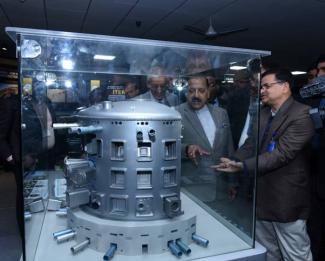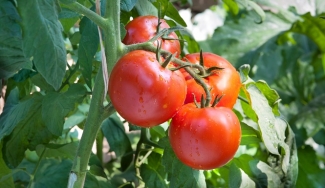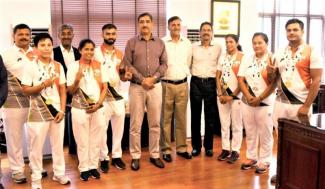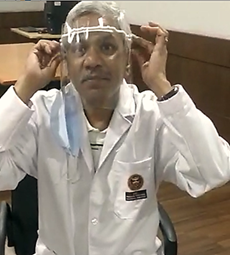
इस समाचार को हिन्दी में पढ़े आगे...
A team of scientists have used tea and banana waste to prepare non-toxic activated carbon, which is useful for several purposes like industrial pollution control, water purification, food and beverage processing, and odour removal. The newly developed process avoids usage of any toxic agent for synthesizing activated carbon, thus making the product cost-effective as well as non-toxic.
The processing of tea generates a lot of waste, generally in the form of tea dust. This could be converted to useful substances. The structure of tea was favourable for conversion to high-quality activated carbon. However, conversion to activated carbon involves use of strong acid and bases, making the product toxic and hence unsuitable for most uses. So a non-toxic method of conversion was needed to overcome this challenge.
Dr N. C. Talukdar, Former Director, Institute of Advanced Study in Science and Technology (IASST), Guwahati, an autonomous institute of the Department of Science & Technology, Govt. of India and Dr Devasish Chowdhury, Associate Professor, used banana plant extract as an alternative activating agent for the preparation of activated carbon from tea wastes.
Oxygenated potassium compounds contained in the banana plant extract help in activating the carbon prepared from tea waste. An Indian patent has recently been granted for this.
The banana plant extract used in the process was prepared by traditional way and is known as Khar, which is an alkaline extract from the ashes of burnt dried banana peels. The most preferred banana for this is called ‘Bheem Kol’ in Assamese. Bheem Kol is an indigenous variety of bananas found only in Assam and parts of North East India. To make khar, first, the peel of the banana is dried and then burnt to make an ash out of it. The ash is then crushed and made into a fine powder. Then using a clean cotton cloth, water is filtered through the ash powder, and the final solution that we get is called khar. The natural khar which is extracted from banana is called ‘Kol Khar’ or ‘Kola Khar’. This extract was used as the activating agent.
IASST team explains, “The reason for the use of tea as a precursor for the synthesis of active carbon is that in tea structure, the carbon atoms are conjugated and having polyphenols bond. This makes the quality of activated carbon better compared to other carbon precursors.”
The main advantage of this process is that starting materials, as well as activating agents, are both waste materials. In the developed process use of any toxic activating agent (e.g., toxic acids and bases) for synthesizing active carbon are avoided. Thus, this process is green for the first time plant materials have been used as an activating agent for the first time. This novel process of synthesizing of active carbon makes the product cost-effective as well as non-toxic.
Patent Details: A PROCESS FOR PREPARATION OF ACTIVATED CARBON FROM TEA WASTE, Patent number 377645
चाय और केले के कचरे का इस्तेमाल गैर-विषाक्त सक्रिय कार्बनविकसित करने के लिए किया गया
वैज्ञानिकों के एक दल ने गैर-विषाक्त सक्रिय कार्बन तैयार करने के लिए चाय और केले के कचरे का इस्तेमाल किया है, जो औद्योगिक प्रदूषण नियंत्रण, जल शोधन, खाद्य एवं पेय प्रसंस्करण, और गंध हटाने जैसे अनेक प्रयोजनों के लिए उपयोगी है। नई विकसित प्रक्रिया सक्रिय कार्बन का संश्लेषण करने के लिए किसी भी विषैले कारक के उपयोग से बचाती है, इस प्रकार उत्पाद को किफायती और गैर-विषाक्त बना देती है।
चाय के प्रसंस्करण से आमतौर पर चाय की धूल के रूप में ढेर सारा कचरा निकलता है। इसे उपयोगी वस्तुओं में बदला जा सकता है। चाय की संरचना उच्च गुणवत्ता वाले सक्रिय कार्बन में परिवर्तन के लिए लाभदायक है। हालांकि, सक्रिय कार्बन के परिवर्तन में महत्वपूर्ण एसिड और आधार संरचना का उपयोग शामिल है, जिससे उत्पाद विषाक्त हो जाता है और इसलिए अधिकांश उपयोगों के लिए अनुपयुक्त हो जाता है। इसलिए इस चुनौती से पार पाने के लिए परिवर्तन के एक गैर विषैले तरीके की आवश्यकता थी।
भारत सरकार के विज्ञान और प्रौद्योगिकी विभाग के एक स्वायत्तशासी संस्थानइंस्टीट्यूट ऑफ एडवान्स्ड स्टडी इन साइंस एंड टेक्नोलॉजी (आईएएसएसटी) गुवाहाटी के पूर्व निदेशक डॉ. एन. सी. तालुकदार, और एसोसिएट प्रोफेसरडॉ. देवाशीष चौधरीने चाय के कचरे से सक्रिय कार्बन तैयार करने के लिए एक वैकल्पिक सक्रिय एजेंट के रूप में केले के पौधे के अर्क का इस्तेमाल किया।
केले के पौधे के अर्क में मौजूद ऑक्सीजन के साथ मिलने वाला पोटेशियम यौगिक चाय के कचरे से तैयार कार्बन को सक्रिय करने में मदद करता है। इसके लिए हाल ही में एक भारतीय पेटेंट दिया गया है।
इस प्रक्रिया में उपयोग किए जाने वाले केले के पौधे का अर्क पारंपरिक तरीके से तैयार किया गया था और इसे खार के नाम से जाना जाता है, जो जले हुए सूखे केले के छिलके की राख से प्राप्त एक क्षारीय अर्क है। इसके लिए सबसे पसंदीदा केले को असमी भाषा में 'भीम कोल' कहा जाता है। भीम कोल केले की एक स्वदेशी किस्म है जो केवल असम और पूर्वोत्तर भारत के कुछ हिस्सों में पाई जाती है। खार बनाने के लिए सबसे पहले केले का छिलका सुखाया जाता है और फिर उसकी राख बनाने के लिए उसे जला दिया जाता है। फिर राख को चूर-चूर करके एक महीन पाउडर बना लिया जाता है। इसके बाद एक साफ सूती कपड़े से राख के चूर्ण से पानी को छान लिया जाता है और अंत में हमें जो घोल मिलता है उसे खार कहते हैं। केले से निकलने वाले प्राकृतिक खार को 'कोल खार'या 'कोला खार'कहा जाता है। इस अर्क का इस्तेमाल सक्रिय करने वाले एजेंट के रूप में किया गया।
आईएएसएसटी दल बताता है, “सक्रिय कार्बन के संश्लेषण के लिए अग्रगामी के रूप में चाय के उपयोग का कारण यह है कि चाय की संरचना में, कार्बन के कण संयुग्म होते हैं और उनमें पॉलीफेनोल्स बॉन्ड होता है। यह अन्य कार्बन अग्रगामियों की तुलना में सक्रिय कार्बन की गुणवत्ता को बेहतर बनाता है।"
इस प्रक्रिया का मुख्य लाभ यह है कि प्रारंभिक सामग्री, साथ ही सक्रिय करने वाले एजेंट, दोनों ही कचरा हैं। विकसित प्रक्रिया में सक्रिय कार्बन को संश्लेषित करने के लिए किसी भी विषैले सक्रिय करने वाले एजेंट (जैसे, विषैले एसिड और बेस) के उपयोग से बचा जाता है। इस प्रकार, यह प्रक्रिया पहली बार हरित है, पौधों की सामग्री को पहली बार सक्रिय करने वाले एजेंट के रूप में उपयोग किया गया है। सक्रिय कार्बन के संश्लेषण की यह नई प्रक्रिया उत्पाद को किफायती और गैर-विषाक्त बनाती है।
पेटेंट विवरण: चाय के कचरे से सक्रिय कार्बन तैयार करने की प्रक्रिया,
पेटेंट संख्या 377645











